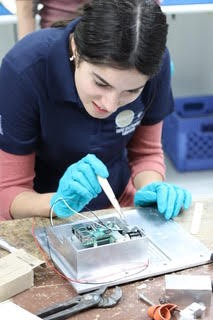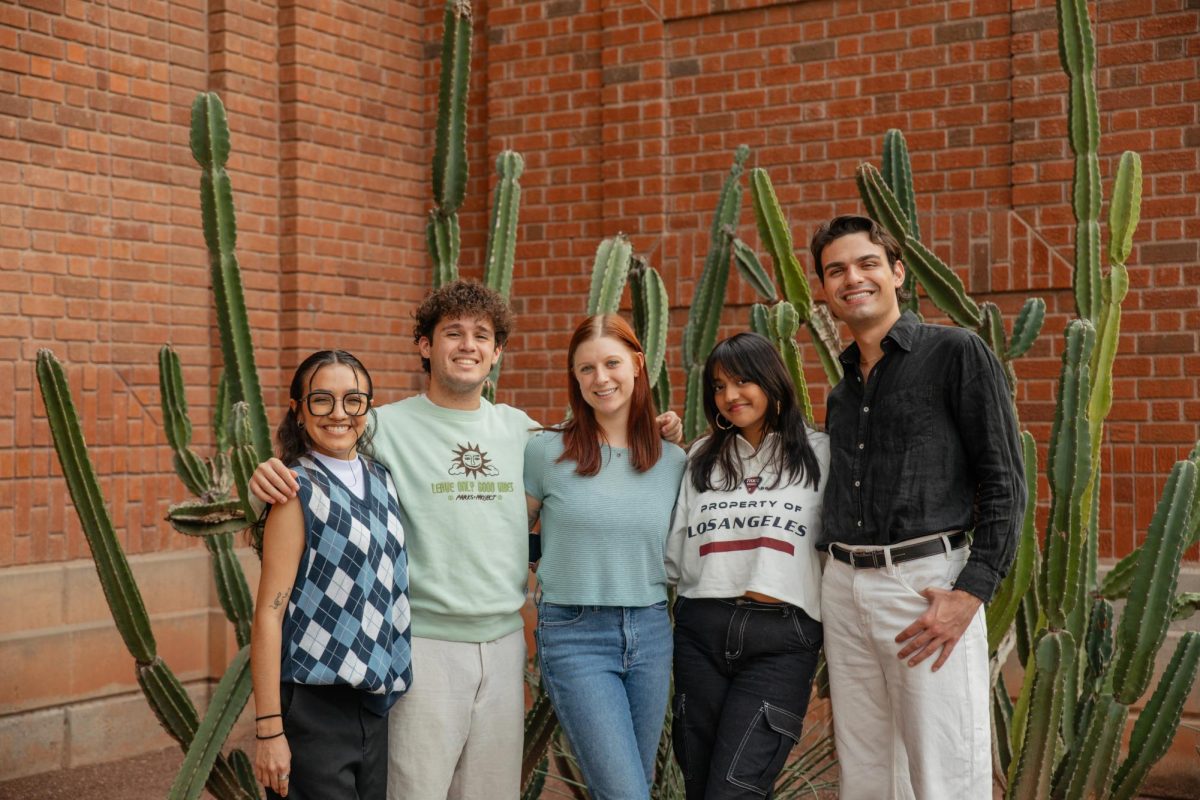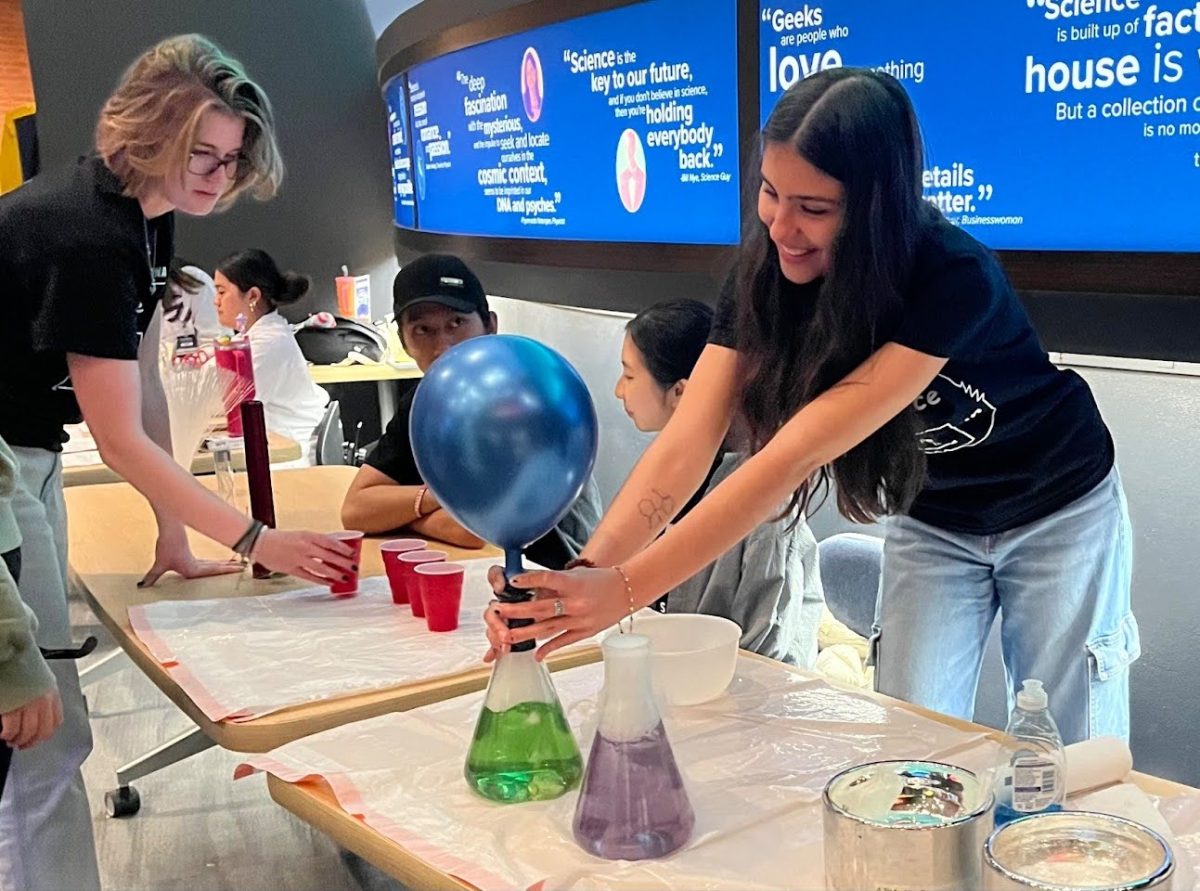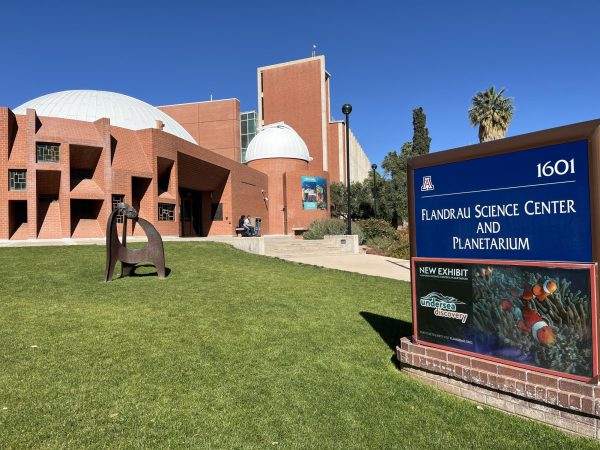A University of Arizona satellite project was selected to be part of the NASA CubeSat Launch Initiative. The UA project is called CatSat and will be exploring the latest miniaturization of satellite technology by demonstrating an inflatable antenna which will transmit HD video from space to Earth.
Roberto Furfaro, one of the engineering principal investigators and a UA professor in systems and industrial engineering, said the ideas of CatSat were to “propose to NASA a mission, get our students to have experience, but also for us to prove new technology.”
RELATED: Q&A: UA researcher chosen for NASA’s SPHEREx mission
They could also gain a more competitive edge in future NASA proposals, Furfaro said.
Jekan Thanga, the other engineering principal investigator and an assistant professor in aerospace and mechanical engineering, specializes in CubeSats. He said the project has enabled lots of UA student involvement, adding, “its primary mission is a demonstration.”
The technology
A CubeSat doens’t have room for a big dish on top, so they came up with a way to inflate it. After inflating, the antenna on the CubeSat becomes about three feet long with the ability to stream real-time HD video from space. It’s packaged in a cube, and “the minute it gets into space, a chemical reaction occurs, and the antenna inflates,” Thanga said.
The satellite will have an experimental camera called CatCam for collecting HD footage to be beamed down by the satellite in real-time, according to Thanga.
“It’s a lot of data, and that’s a limitation for the small satellites,” Furfaro said.
The satellite is more than 10 times less costly than regular large satellites, according to Thanga.
“There are still a lot of fundamental challenges with them,” said Thanga. “The big advantage is that they’re small.”
The smaller the volume and mass, the lower the cost to launch, so it is not affordable for an individual to launch but it is a lot cheaper than the tens of million it used to cost to launch, Thanga said. However, a smaller device means a fainter signal.
Student involvement
Thenga said there is also a lot more opportunity for students to design, build and test their ideas with a smaller project.
“When you’re working on a small project like a CubeSat, everyone is so involved and gets to see every step of the way,” said Tanner Campbell, an aerospace engineering graduate student and program manager for the CubeSat project.
Most of the students currently involved are graduate students, “but we’re expecting to have a larger and larger presence of undergrads,” Furfaro said.
Andrea Scorsoglio is a PhD student studying systems and industrial engineering who is working on the project.
“It’s a really great experience to get more hands-on with dealing directly with companies,” Scorsoglio said. “It’s helpful to learn in a less high-stress environment on how to handle and run a space mission.”
RELATED: OSIRIS-REx arrives to asteroid Bennu after two years of space travel
Campbell said the inflatable technology is to help CubeSats to the next level of deep-space exploration.
“Since I’m an engineer, I really actually enjoy the design and building process,” Campbell said. “I like the math and analysis that we have to do. It’s just exciting, what we’re trying to do.”
According to Campbell, a lot of the CatSat students have been doing this on their own time as a fun project they started a little less than a year ago.
“It’s kind of all been on our own time in our free time, so it’s kind of challenging to manage all of that but I think everyone’s been doing a great job so far in getting everything done,” Campbell said. “It’s been a blessing to have so many motivated people.”
The history
The UA has long heritage of space missions with its world-class planetary science program. Now, Furfaro said they want to build up the CubeSat program, compete at a national level and team up with sponsors to be competitive within NASA for future CubeSat missions.
“We never flew the newer CubeSat before,” Furfaro said.
Now CubeSats are smaller and standardized into a unit to be pieced together. This CubeSat is a 6U which means a 6-unit cube. The UA first attempted to launch multiple CubeSats in 2004 and failed, according to Thanga, but this mission is on a path to success.
“Originally, three professors wanted to figure out an experience for students to build their own satellite in two years and see the start and beginning of a project,” Thanga said. “We said, ‘What if we combine our efforts and our students’ efforts, pool that together and come up with our internally funded satellite?’”
RELATED: One small step, no small feat: UA’s long history with NASA
So Thanga, Furfaro, science principal investigator and astronomy professor Christopher Walker and Vishnu Reddy, an associate professor at the Lunar and Planetary Laboratory and the principal investigator of the mission, created a rigorous model put together with scraps of ideas. Opportunities emerged to play different roles on the project. The proposal stage took about three months.
“The project officially kickstarts with this [NASA] launch opportunity,” Furfaro said.
Campbell also said he is looking toward the future of the project.
“This whole thing has been a learning experience for all of us,” Campbell said. “All of us are still learning things as we go, so it’s been overall a great learning experience.”
Follow Alana Minkler on Twitter















